🎃🍂🍁🐾🐈🐾🍁🍂🎃
🎃🍂🍁🐾🐈🐾🍁🍂🎃

🎃😻🍁 lena_fox_art 🎃😻🍁
More Posts from Monstrous-mind and Others
🎃🎃🎃🎃🌄🍁🍂
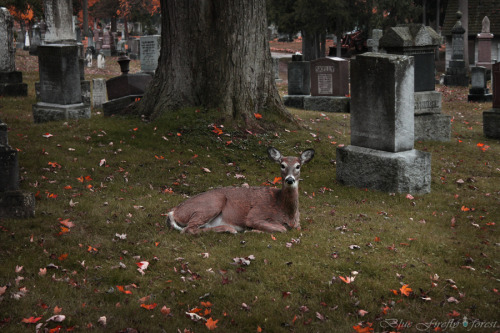



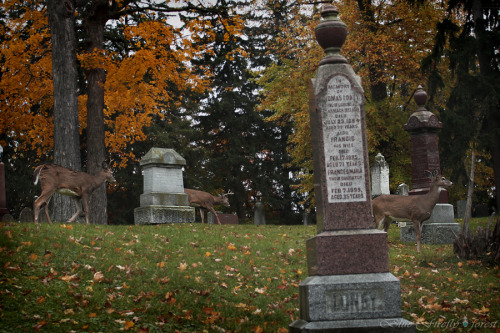
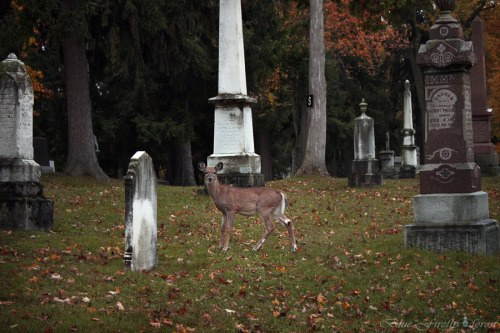


🔭🌃🌌
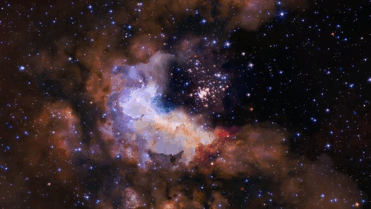
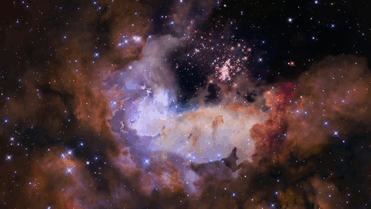
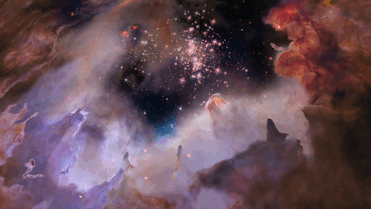
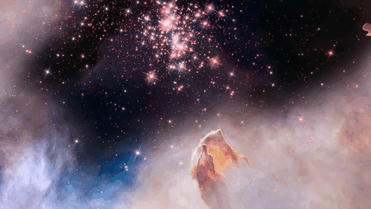
Celestial Fireworks: Into Star Cluster Westerlund 2
What if you could go directly to a cluster where the stars are forming? This animation was done with 3D computer modeling of the region around the star cluster Westerlund 2, based on Hubble Space Telescope images in visible and infrared light. Westerlund 2 covers about 10 light-years and is about 20 thousand light years distant towards the constellation Keel of the ship (Carina). As the illustrative animation begins, the larger Gum 29 nebula fills the screen with the young group of bright stars visible in the center. Stars pass your finger as you approach the cluster. Soon, your imaginary vessel rotates and you pass over the interstellar gas and dust pillars during the light year. Strong winds and radiations from young, massive stars destroy all but the densest clumps of dust, leaving these pillars in their shadows - many pointing back to the center of the cluster. Lastly, you move to the top of the set of stars and search hundreds of the most gigantic stars known.
Credit: NASA, ESA, Hubble, J. Anderson et al. (STScI); Acknowledgment: The Hubble Heritage Team (STScI/AURA), A. Nota (ESA/STScI), the Westerlund 2 Science Team, and the ES

🐈🌃🌌


🛰️🌌🪐☄️🍂🍁

Hubble Sees Possible Runaway Black Hole Creating a Trail of Stars
There's an invisible monster on the loose, barreling through intergalactic space so fast that if it were in our solar system, it could travel from Earth to the Moon in 14 minutes. This supermassive black hole, weighing as much as 20 million Suns, has left behind a never-before-seen 200,000-light-year-long "contrail" of newborn stars, twice the diameter of our Milky Way galaxy. It's likely the result of a rare, bizarre game of galactic billiards among three massive black holes.
The black hole lies at one end of the column, which stretches back to its parent galaxy. There is a remarkably bright knot of ionized oxygen at the outermost tip of the column. Researchers believe gas is probably being shocked and heated from the motion of the black hole hitting the gas, or it could be radiation from an accretion disk around the black hole. "Gas in front of it gets shocked because of this supersonic, very high-velocity impact of the black hole moving through the gas. How it works exactly is not really known," said van Dokkum.
This intergalactic skyrocket is likely the result of multiple collisions of supermassive black holes. Astronomers suspect the first two galaxies merged perhaps 50 million years ago. That brought together two supermassive black holes at their centers. They whirled around each other as a binary black hole.
Credit: NASA


🐈🐅

🍁🍂🎃🍂🍁
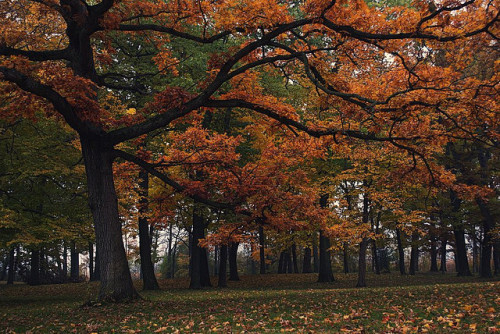
october by OneEyedJax on Flickr.
-
 effigyofowls reblogged this · 7 months ago
effigyofowls reblogged this · 7 months ago -
 freespiritedbeing reblogged this · 11 months ago
freespiritedbeing reblogged this · 11 months ago -
 lavendershazy reblogged this · 1 year ago
lavendershazy reblogged this · 1 year ago -
 living--inside--my--mind reblogged this · 1 year ago
living--inside--my--mind reblogged this · 1 year ago -
 midnight-moon-glow reblogged this · 1 year ago
midnight-moon-glow reblogged this · 1 year ago -
 bobv48-blog liked this · 2 years ago
bobv48-blog liked this · 2 years ago -
 ddelicadezas liked this · 2 years ago
ddelicadezas liked this · 2 years ago -
 lucivethelocalcryptid reblogged this · 2 years ago
lucivethelocalcryptid reblogged this · 2 years ago -
 kassandracas liked this · 2 years ago
kassandracas liked this · 2 years ago -
 letspurpleme reblogged this · 2 years ago
letspurpleme reblogged this · 2 years ago -
 letspurpleme liked this · 2 years ago
letspurpleme liked this · 2 years ago -
 moonlightmirrorball liked this · 2 years ago
moonlightmirrorball liked this · 2 years ago -
 joyriley9 reblogged this · 2 years ago
joyriley9 reblogged this · 2 years ago -
 joyriley9 liked this · 2 years ago
joyriley9 liked this · 2 years ago -
 angryowlet reblogged this · 2 years ago
angryowlet reblogged this · 2 years ago -
 angryowlet liked this · 2 years ago
angryowlet liked this · 2 years ago -
 scully2u liked this · 2 years ago
scully2u liked this · 2 years ago -
 blueberryblues liked this · 2 years ago
blueberryblues liked this · 2 years ago -
 frustrated--novelist--heart reblogged this · 2 years ago
frustrated--novelist--heart reblogged this · 2 years ago -
 coppercorn-and-cauldron reblogged this · 2 years ago
coppercorn-and-cauldron reblogged this · 2 years ago -
 bard-owl liked this · 2 years ago
bard-owl liked this · 2 years ago -
 dreanlamd reblogged this · 2 years ago
dreanlamd reblogged this · 2 years ago -
 rapazg liked this · 2 years ago
rapazg liked this · 2 years ago -
 autumnwinterlovex reblogged this · 2 years ago
autumnwinterlovex reblogged this · 2 years ago -
 bagnolet liked this · 2 years ago
bagnolet liked this · 2 years ago -
 mina1126 reblogged this · 2 years ago
mina1126 reblogged this · 2 years ago -
 mina1126 liked this · 2 years ago
mina1126 liked this · 2 years ago -
 newmoondrops liked this · 2 years ago
newmoondrops liked this · 2 years ago -
 bfab26 liked this · 2 years ago
bfab26 liked this · 2 years ago -
 luvthesepeepsandplaces liked this · 2 years ago
luvthesepeepsandplaces liked this · 2 years ago -
 dailydave1 liked this · 2 years ago
dailydave1 liked this · 2 years ago -
 fhsolve liked this · 2 years ago
fhsolve liked this · 2 years ago -
 exploreingsstuff reblogged this · 2 years ago
exploreingsstuff reblogged this · 2 years ago -
 exploreingsstuff liked this · 2 years ago
exploreingsstuff liked this · 2 years ago -
 petalponies liked this · 2 years ago
petalponies liked this · 2 years ago -
 dreamingofanothertime reblogged this · 2 years ago
dreamingofanothertime reblogged this · 2 years ago -
 alwayshalloweeninmyhead liked this · 2 years ago
alwayshalloweeninmyhead liked this · 2 years ago -
 yooperd liked this · 2 years ago
yooperd liked this · 2 years ago -
 serenityxendymion liked this · 2 years ago
serenityxendymion liked this · 2 years ago -
 dreamingofanothertime liked this · 2 years ago
dreamingofanothertime liked this · 2 years ago -
 pumpkinsae liked this · 3 years ago
pumpkinsae liked this · 3 years ago -
 xenorat reblogged this · 3 years ago
xenorat reblogged this · 3 years ago -
 brittomartis reblogged this · 3 years ago
brittomartis reblogged this · 3 years ago -
 helloworld123sworld reblogged this · 3 years ago
helloworld123sworld reblogged this · 3 years ago -
 runs-4-pinkcupcakes liked this · 3 years ago
runs-4-pinkcupcakes liked this · 3 years ago
My ambition is handicapped by laziness. -C. Bukowski Me gustan las personas desesperadas con mentes rotas y destinos rotos. Están llenos de sorpresas y explosiones. -C. Bukowski. I love cats. Born in the early 80's, raised in the 90's. I like Nature, Autumn, books, landscapes, cold days, cloudy Windy days, space, Science, Paleontology, Biology, Astronomy, History, Social Sciences, Drawing, spending the night watching at the stars, Rick & Morty. I'm a lazy ass.
222 posts